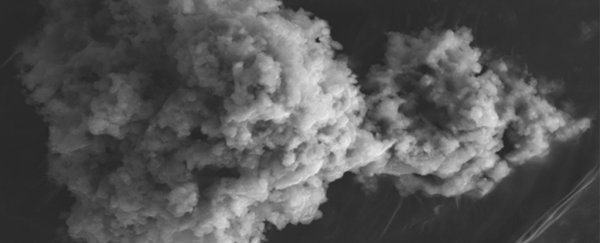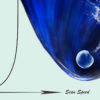We’ve known for a while that Earth is under a constant rain of space dust, and that it’s copious. Given its microscopic size, however, it’s been very hard to obtain an accurate estimate of the quantity.
Such micrometeorites are no bigger than a fraction of a millimeter, shed like space dander from passing comets and asteroids.
After two decades of collecting the stuff in Antarctica, an international team of scientists now has a number: around 5,200 tons of micrometeorites smaller than 700 micrometers (0.7 millimeters), every year.
This, they said, makes micrometeorites the biggest source of extraterrestrial material delivered to Earth’s surface.
It’s actually quite an achievement. Earth’s atmosphere is filled with dust, of all kinds. A study last year found that around 17 million metric tonnes of coarse dust is blowing around in the atmosphere at any given time.
To minimize this ‘background’ dust, the team turned to Antarctica at the Concordia station at Dome C. Terrestrial dust is pretty much absent there, and the snow accumulation rate is low, which means the snow that is already there can be melted to obtain the rate of micrometeorite fall in the region.

In six expeditions over the course of 20 years, the researchers did just that. They identified a total of 1,280 unmelted micrometeorites and 808 cosmic spherules (melted space rock) below 350 micrograms in mass, which allowed them to calculate the rate at which these particles rain down on the surface.
According to their calculations, extrapolated across the globe and assuming that the rain is evenly distributed, roughly 1,600 tons of micrometeorites and 3,600 tons of cosmic spherules reach the surface every year. That’s a total of 5,200 tons annually.
The next part of the research was an analysis of the dust to determine its origin, based on the density of the grains. Lower density and higher porosity suggest a cometary origin, and higher density and lower porosity suggest a meteoritic origin.
From this, the team extrapolated that roughly 80 percent of the cosmic dust that reaches Earth’s surface is ejected from comets as they zoom by on their orbital journeys – a number consistent with previous estimates of the cometary input to space dust on Earth.
The team’s models, however, also showed that the total mass of cosmic dust input before atmospheric entry is around 15,000 tons. The reason for this discrepancy isn’t clear, but there are a couple of major options.
One is that a significant proportion of the dust evades our ability to detect it. Another is that some of the dust is removed prior to atmospheric entry. A third could be that there is significantly less dust in the space around Earth than we think there is.
Figuring out which of these it is, the researchers said, could help us better constrain the role of cosmic dust in delivering water molecules and carbon to Earth, in the early days of the Solar System – in turn providing pieces of the puzzle that is the emergence of life itself.
The team’s research has been published in Earth and Planetary Science Letters.



